As I mentioned in my last post, we left Louisville, Kentucky, at about 5:30 p.m. on August 29th, to drive toward Denver. We made it about halfway before calling it a night. The next morning, we got up and drove the remaining 8 hours, arriving in Denver at about 6:00 p.m. We were exhausted but looking forward to a day of downtime before our visit to Coors Field.
The highlight of our visit to Denver was a reunion with friends we met travelling in 2019. Ryan and their son, Jordon, have remained good friends. The two of them disappeared shortly after we arrived in town, and returned to the trailer before we left two days later!
A Side-Trip to the Molly Brown House Museum
The morning of the game, our two families got together for brunch. Brad returned to the trailer to address more screws that have wiggled loose and patch a leaking grey water tank. Ryan and Jordan took off to visit some high-tech store that is a mecca for people who like building computers. And Laura, Jim and I visited the Molly Brown House Museum.
The house, itself, is a lovely historical home outfitted as it would have been in 1910, shortly before Molly Brown moved out. The more important part of the tour, though, is its attempts to reverse the reputation and myths surrounding a woman who was, in fact, never called Molly Brown.
Her name was Margaret Brown. As far as anyone knows, the first time she was called Molly Brown was by the sports reporter who was assigned to write her obituary when she died.
Margaret Brown was also not the crass, loud character she is portrayed to be in movies. She was a philanthropist, born of two parents who were progressives in their day. In addition to working for workers rights, often as the negotiator between labor and management, she was so committed to women’s suffrage that she moved from her home in Denver to New Hampshire to be closer to the political movement. She was also a compassionate mother, who raised both her own children and those of several relatives.
Her family remains frustrated at the impact the obituary had, and the way the silver screen has portrayed her life. I found it interesting and disturbing that one misleading story, picked up and circulated, could change a person’s impact and legacy in such profound ways.
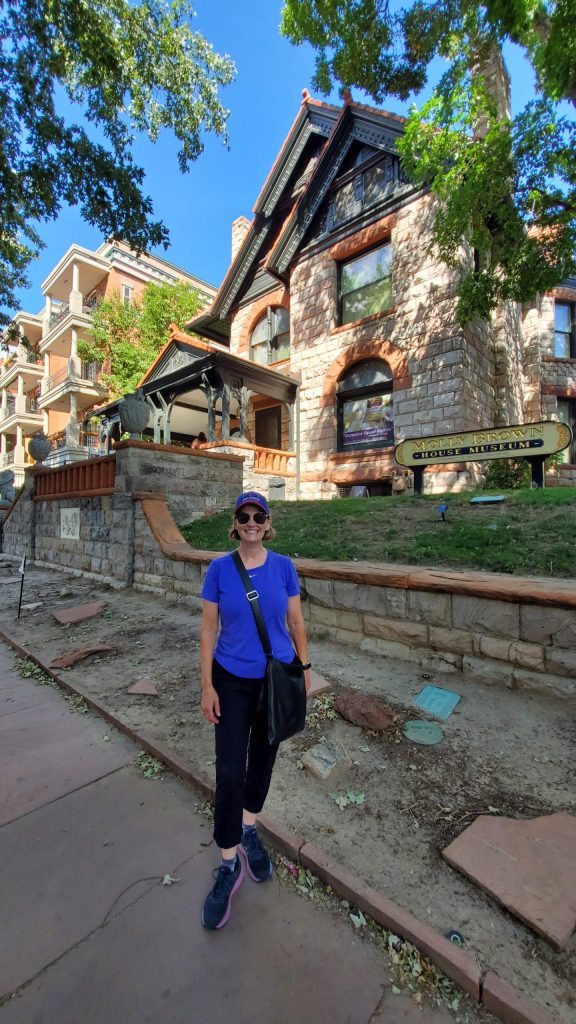
A Stop at the National Ballpark Museum
Brad and I stopped at the National Ballpark Museum, a small museum that is bursting at the seams with ballpark memorabilia, before entering Coors Field. For a small entrance donation, you’ll see stadium seats from ballparks past and present, get a close look at bases, stadium layouts, signage, and turn-styles. If you have a few minutes before the gates open at Coors Field, this museum is worth a visit.
Our Impressions of Coors Field
The E Gate opens earliest, so Brad and I headed for that entrance. Just before the appointed time, a staff member came out and invited us to join in a “Gate E Tradition.” Together, we sang a rousing rendition of Take Me Out to the Ballgame! Once inside, we watched batting practice until the rest of our group arrived.
When we connected with them, they were watching Ryan in the pitching booth in the concourse. Fans are invited to test their pitching skills. A leader board records the pitch speeds of contestants. At 81 miles per hour, Ryan’s pitch set the record for the 12 to 18 fan group. He remained in the lead for the remainder of the game!
Every stadium has a few unique features. Coors Field has a lovely batter’s eye, with native trees and shrubs. The batter’s eye extends into their bullpens, so that pitchers are warming up in an environment surrounded by nature.
In case you are a baseball neophyte (like me), I’ll give a couple of definitions. The “batter’s eye” is the area behind the pitcher’s mount as seen from home base. It is typically planted with something green neutral so that it is easier for the batter to see the ball after it has been pitched. The batter’s eye varies from ivy at Fenway to water features at Kauffman Field. A bullpen is the place that pitchers and catchers warm up before they take the mound. The bullpen is often, but not always a separate enclosed area that allows pitchers to warm up during the game without a high risk of being hit by a ball in play.




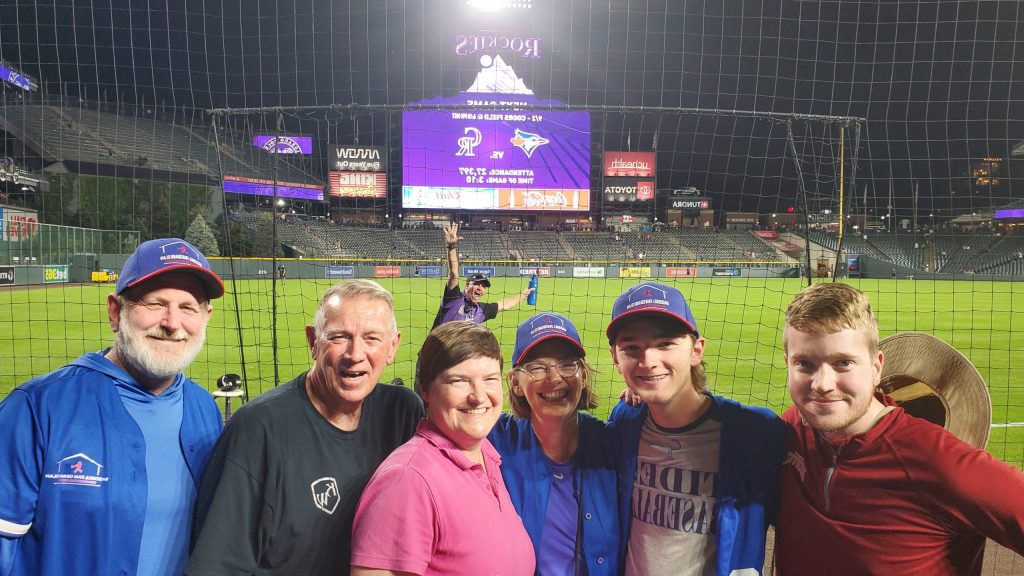
And Now, the Rest of the Story
Our Seats: This time, we were seated down the first base line in the outfield. We were in Section 115, Row 1, Seats 3 through 8. If we were returning to Coors Field, I wouldn’t hesitate to purchase these same seats. However, I would choose seats 7 and higher, if I had a choice. They have a slightly better angle from which to watch the game.
The Food: Before the game, we had a drink in the Mountain Ranch Bar and Grill. Ryan and our friends enjoyed the buffet dinner. For about $34, you can enjoy an all-you-can-eat buffet of ballpark favorites and less traditional selections. Brad and I weren’t hungry enough to make a buffet worth our while. Brad opted for a traditional ballpark pretzel, while I tried the ballpark’s signature dish: Rocky Mountain Oysters.
This seemed like a particularly appropriate choice to me. My Dad introduced me to Rocky Mountain Oysters growing up. The night of the game was my Dad’s birthday, and we missed his big celebration at home. Enjoying one of his favorite dishes seemed like a good way to celebrate in absentia!
Non-Alcoholic Beer Review: Coors Field serves … wait for it … Coors Edge!

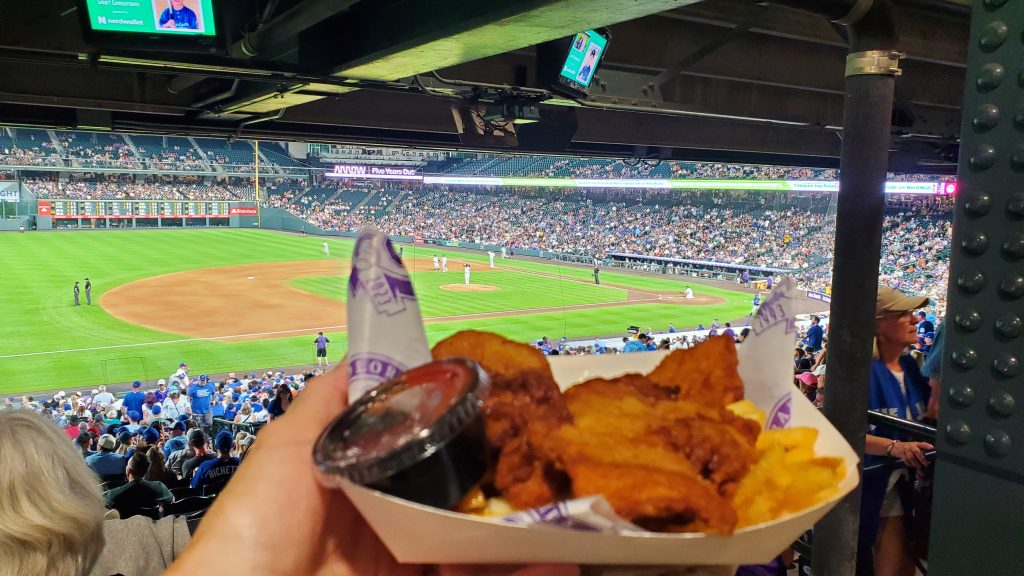
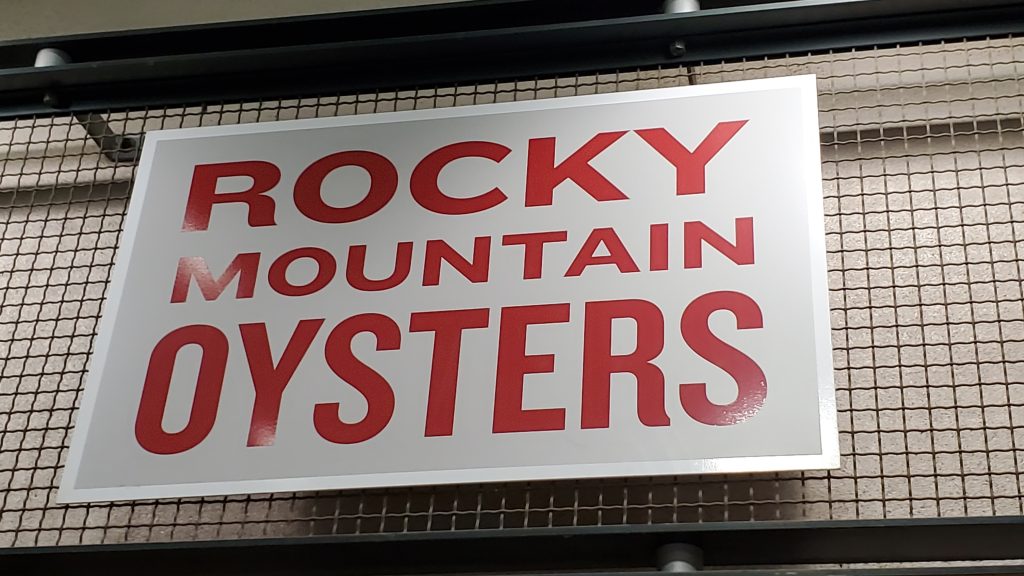
The Game Recap: 5 Home Runs for Housing!
The Colorado Rockies took on the Toronto Blue Jays. Together, they hit five Home Runs for Housing! This generated an additional $705 for people who are employed yet struggling to make ends meet.
Here’s how the game played out. The Rockies Elehuris Montero hit a home run the bottom of the third to put the first runs on the board. But the Blue Jays clawed their way back with a single-run homer in each of the next two innings. The first was hit by Brandon Belt in the top of the fourth, followed by a home run by Ernie Clement in the top of the fifth. At the end of the fifth, the two teams were tied with two runs each. Home Runs for Housing was ahead by three!
In the top of the sixth, Blue Jay Danny Jansen hit a two-run homer to left field, advancing the Jays into the lead. The Rockies Nolan Jones finished the sixth with a three-run home run and the team returned to a narrow, one-run lead.
Then, the Rockies luck changed. In the 7th inning, the Blue Jays scored five runs on two doubles and a single, giving the Toronto-based team a three-run lead. The score stood 8 to 5. The Rockies were unable to narrow that lead in the bottom of the 8th.
In the ninth, both teams hit triples, but the Blue Jays had more players on scoring position. In the end, the Rockies lost to the Blue Jays, 13 to 9.


My Favorite Drive
We left Denver early the next morning, pausing at the Richfield KOA Holiday RV Park in Richfield, Utah, for the night. While there is beauty in every area across the United States, from the lush, rolling hills of Pennsylvania to the cactus in Arizona, this drive has been my favorite to date.
I tried to snap pictures we drove along, but it’s difficult to capture the beauty through bug-splattered windows. Brad and I look forward to returning to explore the area between Denver and Los Angeles at a more leisurely pace in the future.
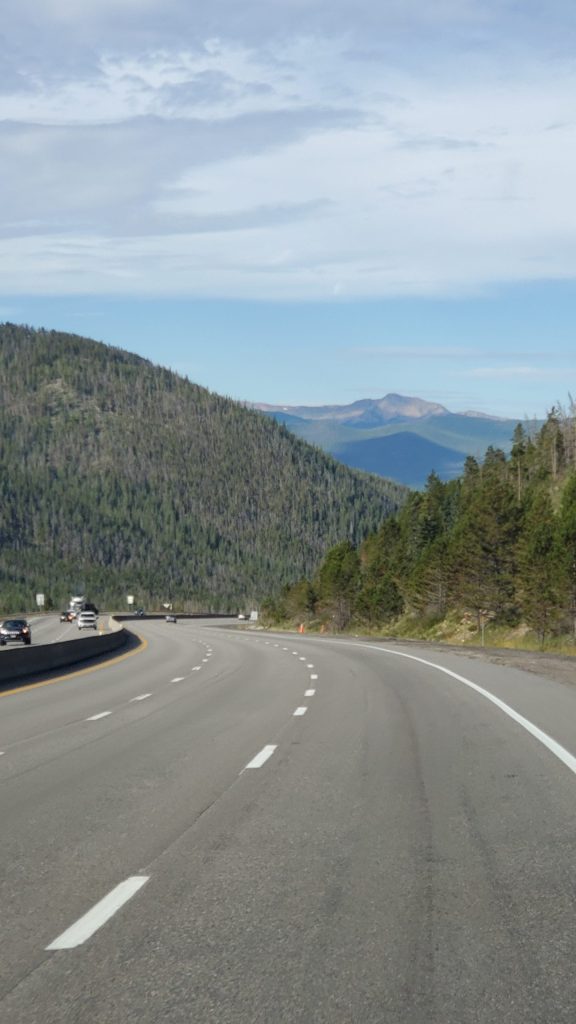


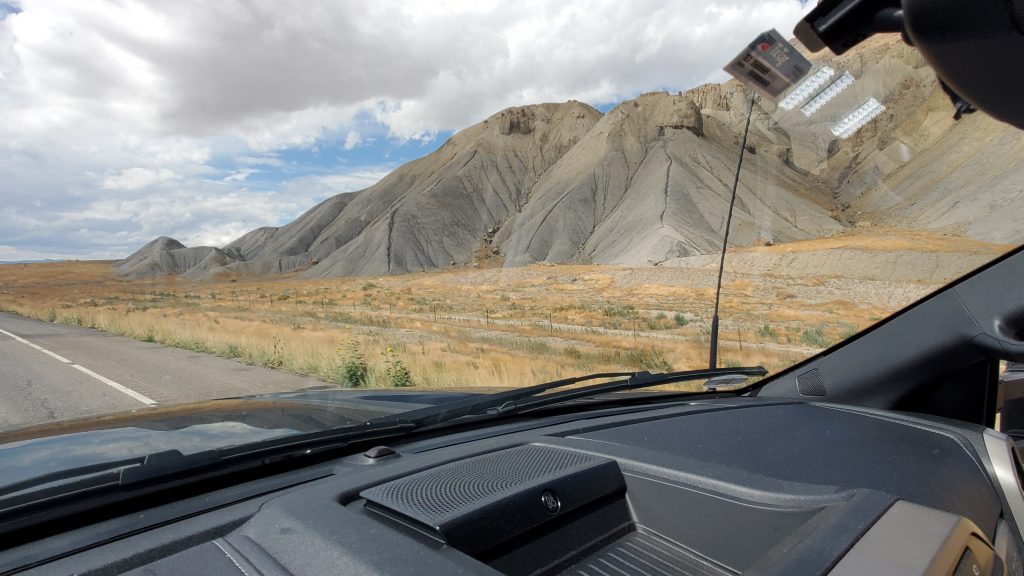



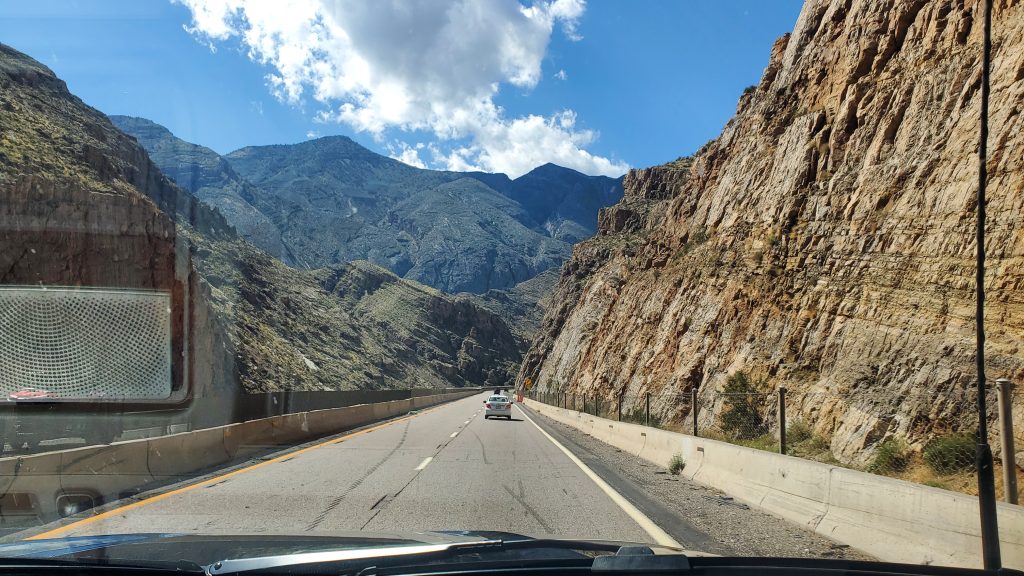
Up Next:
We ended our journey at the Orangeland RV Park in Anaheim, California. In addition to being a really nice RV park at a reasonable price for an urban area, this campground was an easy 20-minute stroll from our next destination: Angel Stadium.
